I have the following XAML, a TabControl which binds to an ObservableCollection and creates my tabs just fine.
<Window x:Class="BA_Auditing.AuditWindow"
xmlns="http://schemas.microsoft.com/winfx/2006/xaml/presentation"
xmlns:x="http://schemas.microsoft.com/winfx/2006/xaml"
Title="BizeAsset - Audit Results" Height="700" Width="1120" WindowStartupLocation="CenterScreen" WindowState="Maximized">
<Grid>
<TabControl Name="ModuleTabControl" HorizontalAlignment="Stretch" VerticalAlignment="Stretch" Margin="5" ItemsSource="{Binding}" >
<TabControl.ItemTemplate>
<DataTemplate>
<TextBlock>
<TextBlock Text="{Binding DISPLAY_NAME}"/>
</TextBlock>
</DataTemplate>
</TabControl.ItemTemplate>
<TabControl.ContentTemplate>
<DataTemplate>
<Grid>
<Grid.RowDefinitions>
<RowDefinition />
<RowDefinition Height="Auto" />
<RowDefinition />
</Grid.RowDefinitions>
<Grid Grid.Row="0">
<Grid.ColumnDefinitions>
<ColumnDefinition />
<ColumnDefinition />
</Grid.ColumnDefinitions>
<TextBlock Grid.Column="0" Text="Search:" HorizontalAlignment="Right"/>
<TextBox x:Name="tbxSearch" Grid.Column="1"/>
</Grid>
<TextBlock Grid.Row="2" Text="Items Selected: 0 of 908" />
</Grid>
</DataTemplate>
</TabControl.ContentTemplate>
</TabControl>
</Grid>
</Window>
Next I'd like to populate each tab area with the next level of controls, which will include a Label, TextBox another TabControl and a TextBlock.
I previously wrote this in WinForms and this is what it looks like:
What XAML do I need add to do this?
That is because I am designing it dynamically via binding rather than literally adding a TabItem
[EDIT]
I have tried to enter controls into the TabControl.ContentTemplate however nothing displays in the body of the TabItem.


